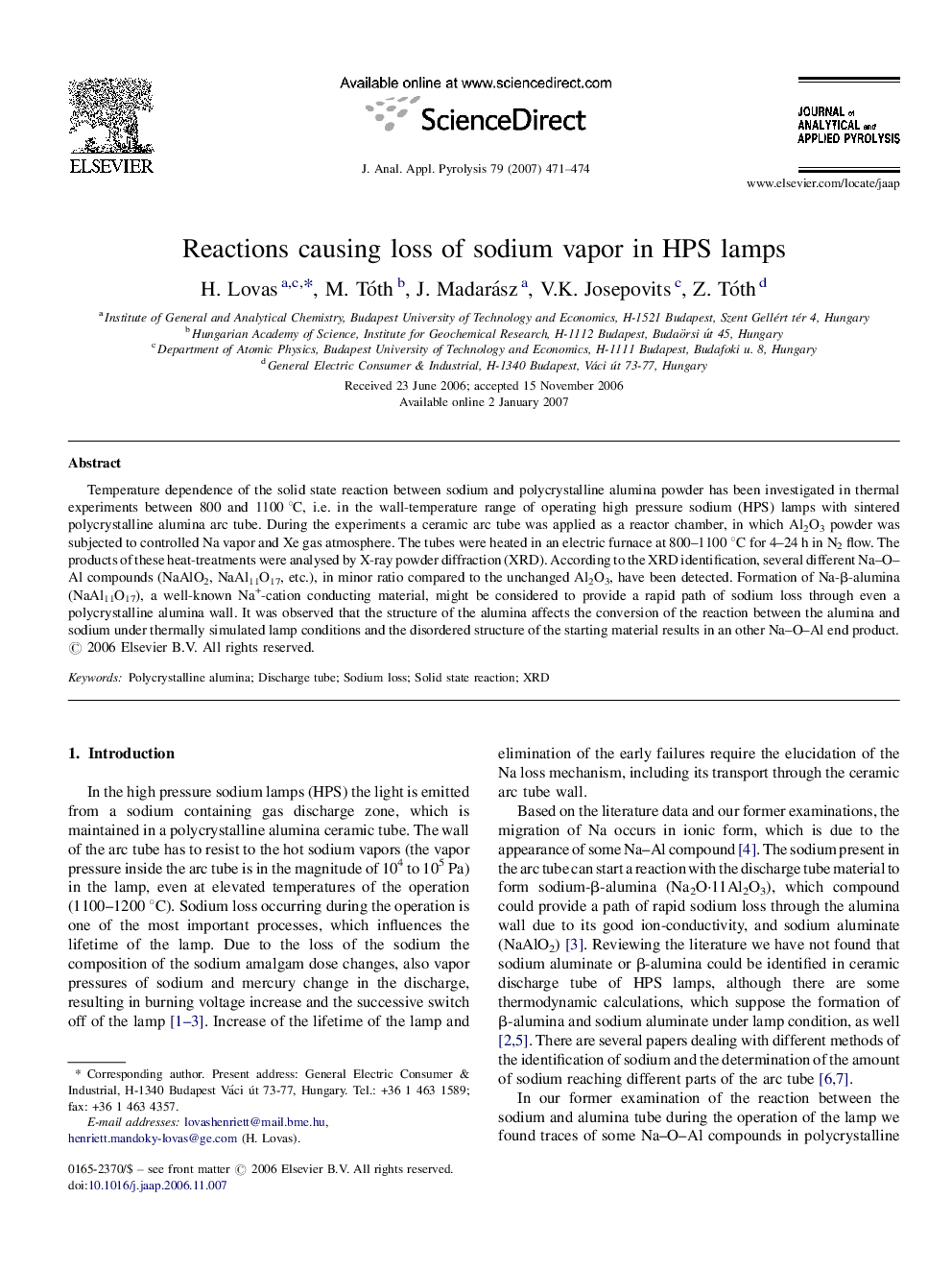| Article ID | Journal | Published Year | Pages | File Type |
|---|---|---|---|---|
| 1197983 | Journal of Analytical and Applied Pyrolysis | 2007 | 4 Pages |
Abstract
Temperature dependence of the solid state reaction between sodium and polycrystalline alumina powder has been investigated in thermal experiments between 800 and 1100 °C, i.e. in the wall-temperature range of operating high pressure sodium (HPS) lamps with sintered polycrystalline alumina arc tube. During the experiments a ceramic arc tube was applied as a reactor chamber, in which Al2O3 powder was subjected to controlled Na vapor and Xe gas atmosphere. The tubes were heated in an electric furnace at 800-1100 °C for 4-24 h in N2 flow. The products of these heat-treatments were analysed by X-ray powder diffraction (XRD). According to the XRD identification, several different Na-O-Al compounds (NaAlO2, NaAl11O17, etc.), in minor ratio compared to the unchanged Al2O3, have been detected. Formation of Na-β-alumina (NaAl11O17), a well-known Na+-cation conducting material, might be considered to provide a rapid path of sodium loss through even a polycrystalline alumina wall. It was observed that the structure of the alumina affects the conversion of the reaction between the alumina and sodium under thermally simulated lamp conditions and the disordered structure of the starting material results in an other Na-O-Al end product.
Related Topics
Physical Sciences and Engineering
Chemistry
Analytical Chemistry
Authors
H. Lovas, M. Tóth, J. Madarász, V.K. Josepovits, Z. Tóth,
